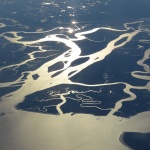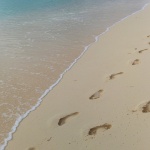The Fakahatchee Strand is an open marsh backwood, roughly twenty miles in length by five miles wide and lined from north to south. It has been etched by the flow of water for a great many years and clean crisp is the best way to describe its waters. Underneath a defensive covering of bare cypress trees streams a moderate flow, shallow waterway or swamp that is hotter than the average temperature in the winter but cooler in the mid-year. The buffering impact of the quagmire and the more deep lakes that accentuate it shield the backwoods inside from outrageously frosty temperatures and this encourages a rather abnormal growth of uncommon but endangered tropical plant species.
The Fakahatchee Strand Preserve State Park has a wide exhibit of habitats and backwoods of sorts from the wetter bogs and prairies to the drier islands of tropical hardwood lofts and pine lands. Its forests of local royal palms are the most plentiful in the state. The ecological system of the Fakahatchee Strand is the main place on the planet where bare cypress trees and royal palms share the timberland shade. This has been very vital to the region’s ecosystem. It is the orchid and bromeliad capital of the landmass with 44 local orchids and 14 local bromeliad species. Florida Panthers still seek after white-tailed deer from the uplands over the wetlands. Florida wild bears and Eastern indigo snakes, Everglades’s minks and diamondback snake can even now be found here. The endemic and migratory bird life is terrific and draws in numerous eager guests.
The herbal pleasures of this watery wild incorporate the biggest number of the United States rarest species, including a record number of Florida illustrious palms, endemic freshwater plants, fourteen kinds of local bromeliads and 44 unique types of orchids, including the elusive, and at one point highly controversial, ghost orchid.
Exploring this huge wild place takes guts and a good knowledge of the wilderness, aside from the one mild introduction to this place: the Big Cypress Bend promenade off US 41 west of Everglades City. This half-mile raised walkway winds between antiquated uncovered cypress shaggy with bromeliads. This maybe the only safe stretch for visitors; the rest is the untamed wilderness.
The southern bit of the Fakahatchee Strand Preserve is a standout amongst the most bountiful estuarine biological systems on the planet. Underneath the surface, where crisp water continuously turns out to be more saline, perfect conditions exist for bringing forth and the advancement of fry of industrially and recreationally vital fish species. Rookeries of birds shading the scene with specks of white, blue and pink can be seen all over. Canoeists and kayakers appreciate exploring in the midst of the grand magnificence. Fishermen work on the mangrove-embraced backwaters for snapper, snook, tarpon and redfish. West Indian manatees drift about in slow movements while American alligators sneak beneath the murky waters to hide their presence, slipping all through the tannic water to loll in the sun. On the seaside keys of the Ten Thousand Islands, loggerhead and green ocean turtles return every year to settle on similar spits of white sand shoreline from which they themselves once developed.
We mentioned so many different forms of life in this short article alone. Imagine what it’s like to actually be in this place and discover more, so better visit The Fakahatchee Strand Preserve State Park for a real pleasant surprise.










